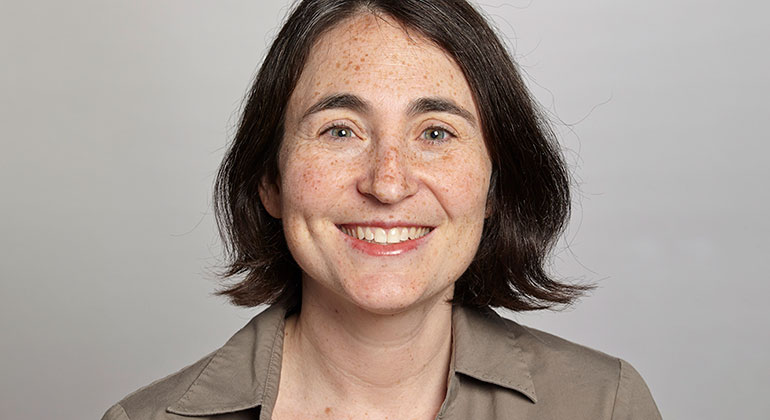Large Urban Hospitals at Disadvantage by Current Medicare and Medicaid Patient Satisfaction Rating System
The largest urban health systems do worse on government patient satisfaction scores than smaller, non-urban hospitals according to a new study by Mount Sinai researchers published this month in the Journal of Hospital Medicine.
The largest urban health systems, which serve as safety nets for large patient populations with lower socioeconomic status and greater likelihood to speak English as a second language, do worse on government patient satisfaction scores than smaller, non-urban hospitals likely to serve white customers with higher education levels, according to a new study by Mount Sinai researchers published this month in the Journal of Hospital Medicine.
Patient satisfaction scores, in part due to the Affordable Care Act of 2010, are a key part of the formula that determines reimbursements levels to hospitals by the Centers for Medicare and Medicaid Services (CMS). The ACA has encouraged hospitals to evolve from a fee-for-service model to one based on measures of value, including patient satisfaction. Hospitals are rewarded or penalized based on metrics that assess quality and efficiency of care in part culled from Hospital Consumer Assessment of Healthcare Providers and Systems (HCAHPS) surveys.
The study authors suggest that the current formulas need adjustment to be fair to large, urban hospitals, and offer a formula to achieve this equity.
“Our analysis found that the lowest satisfaction scores were obtained from population-dense regions of Washington, DC; New York State, California, Maryland and New Jersey, and the best scores were from Louisiana, South Dakota, Iowa, Maine and Vermont,” said senior author Randall Holcombe, MD, Professor, Medicine, Hematology and Medical Oncology, Icahn School of Medicine at Mount Sinai, and Chief Medical Officer for Cancer for The Mount Sinai Health System.
“Across the country, large hospital size and non-English as a primary language predicted poor patient satisfaction scores while white race and higher education level predicted better scores,” said co-author Daniel McFarland, DO, Clinical Fellow, Hematology and Medical Oncology, Icahn School of Medicine at Mount Sinai. “Other demographic factors were also important but these four were the most significant.”
“This study points out that the interpretation of patient satisfaction scores can be very complex," said Sandra Myerson, MBA, MS, BNS, RN, Senior Vice President and Chief Patient Experience Officer of the Mount Sinai Health System. “It is important to understand these trends in order to provide the highest quality of patient experience.”
Study Details
The Mount Sinai research team analyzed survey data from 934,800 respondents seen at 3,907 hospitals across the country to identify statistical links between determine patients’ perceptions of their care and demographic factors outside the control of individual hospitals. The study revealed that changes in patient satisfaction tracked with changes hospital size and English as a primary language, regardless of location. These factors were then capable of predicting patient satisfaction levels when fed into statistical models.
Dr. Holcombe and co-authors Dr. McFarland and Katherine Ornstein, PhD, Division of Geriatrics and Palliative Medicine, Icahn School of Medicine, developed an adjustment formula to account for the inequities in patient satisfaction scores.
“When this adjustment formula was applied to all New York State Hospitals, three large, urban academic medical centers – NY Presbyterian, Montefiore and Mount Sinai – moved into the top 10 in ranking,” said Dr. Holcombe. “The formula removes excessive influence of the top 4 contributors of patient satisfaction bias that are outside of the control of a hospital. Our study suggests CMS could eliminate biases by modifying its formulas.”
About the Mount Sinai Health System
Mount Sinai Health System is one of the largest academic medical systems in the New York metro area, with more than 43,000 employees working across eight hospitals, over 400 outpatient practices, nearly 300 labs, a school of nursing, and a leading school of medicine and graduate education. Mount Sinai advances health for all people, everywhere, by taking on the most complex health care challenges of our time — discovering and applying new scientific learning and knowledge; developing safer, more effective treatments; educating the next generation of medical leaders and innovators; and supporting local communities by delivering high-quality care to all who need it.
Through the integration of its hospitals, labs, and schools, Mount Sinai offers comprehensive health care solutions from birth through geriatrics, leveraging innovative approaches such as artificial intelligence and informatics while keeping patients’ medical and emotional needs at the center of all treatment. The Health System includes approximately 7,300 primary and specialty care physicians; 13 joint-venture outpatient surgery centers throughout the five boroughs of New York City, Westchester, Long Island, and Florida; and more than 30 affiliated community health centers. We are consistently ranked by U.S. News & World Report's Best Hospitals, receiving high "Honor Roll" status, and are highly ranked: No. 1 in Geriatrics and top 20 in Cardiology/Heart Surgery, Diabetes/Endocrinology, Gastroenterology/GI Surgery, Neurology/Neurosurgery, Orthopedics, Pulmonology/Lung Surgery, Rehabilitation, and Urology. New York Eye and Ear Infirmary of Mount Sinai is ranked No. 12 in Ophthalmology. U.S. News & World Report’s “Best Children’s Hospitals” ranks Mount Sinai Kravis Children's Hospital among the country’s best in several pediatric specialties.
For more information, visit https://www.mountsinai.org or find Mount Sinai on Facebook, Twitter and YouTube.

